On August 1, 1689, Basho visited Kisakata (象潟), Akita Prefecture (秋田県), Northern Honshu, on his journey.
Basho wrote about Kisakata in his travel diary The Narrow Road to Oku, 『おくのほそ道 (Oku no Hosomichi 』 as follows:
江山水陸の風光数を尽くして、今象潟に方寸を責。酒田の湊より東北の方、山を越、磯を伝ひ、いさごをふみて其際十里、日影やゝかたぶく比、汐風真砂を吹上、雨朦朧として鳥海の山かくる。闇中に莫作して「雨も又奇也」 とせば、雨後の晴色又頼母敷と、あまの苫屋に膝をいれて、雨の晴を待。其朝天能霽れて、朝日花やかにさし出る程に、象潟に舟をうかぶ。
先能因島に舟をよせて、三年幽居の跡をとぶらひ、むかふの岸に舟をあがれば、「花の上こぐ」とよまれし桜の老木、西行法師の記念をのこす。
Here is a painting of Kisakata in those days.
Photo courtesy; as per original copyright at:
http://www.touhoku.com/0a-03-kisakata.htm
Donald Keene translated this section into English as follows:
After having seen so many splendid views of both land and sea, I could think of nothing now but Kisakata. We journeyed to the northeast from the port of Sakata, climbing over hills, following along the shore, plodding through the sand, a distance of about twenty miles in all. As the sun was sinking in the sky a breeze from the sea stirred up the sand, and a misty rain started to fall, obscuring Chokai Mountain. We groped ahead in the darkness. I felt sure that if Kisakata was exquisite in the rain, it would prove no less wonderful when it cleared. We squeezed into a fisherman’s thatch-covered hut and waited for the rain to stop.
The next morning the weather cleared beautifully. When the morning sun rose in all its splendor, we took a boat out on the lagoon of Kisakata. We put in first at Noin Island, where we visited the remains of the hut in which Noin lived in seclusion for three years. On the opposite shore, when we landed from our boat, we saw the old cherry tree that stands as a memento of Saigyo.
In fact, there were 99 small islands and 88 lagoons in Kisakata in those days and the people enjoyed beautiful sceneries or fishing by boat around the islands.
However, on July 10, 1804, a big earthquake occurred in Kisakata about 115 years after Basho’s visit there. The earthquake caused upheaval of ground by 2.4 meters. As a result, the lagoons were changed into dry land.
Now most of those lagoons have turned into rice fields or residential areas, but there are the remains of those days left there.
You can see such remains as the Noin Island, the boat-tying stone, or small islands in the article Basho’s Stay in Kisakata (1) at the site : https://akitahaiku.wordpress.com/2009/08/29/
Here is a photo of present-day Kisakata, 200 years after the earthquake, which was exhibited at Kisakata Local Museum in Nikaho-city, in June , 2004.(にかほ市象潟郷土資料館企画展2004年6月).
As posted already above, Donald Keene, the ex- member of the President’s Advisory Board at Akita International University(AIU)(国際教養大学), kindly contributed part of his English translation for Matsuo Basho’s travel diary The Narrow Road to Oku, 『おくのほそ道 (Oku no Hosomichi 』 to our network.
This is because AIU President Mineo Nakajima (中嶋嶺雄) asked Donald Keene for his permission for us to use part of his translation.
Kirby Record, a professor at AIU, teaching as director of English for Academic Purposes, also contributed his haiku to us.
Haiku by K. Record
On the Earthquake
Villages of rubble 瓦礫の村々
Everything washed away 何もかも流される
But the still-blue sky しかし静かで青い空
Clutched in the hand 手でしっかりとつかんでいる
Of a child, floating face down—
子供の手に、顔を下にして浮かんでいる―
Her favorite doll 彼女の大好きな人形
Yukari Sakamoto (阪本縁), a graduate from AIU, wrote haiku on the earthquake.
なごり雪大地が動き沈黙す
Unseasonable snow
In silence
While the earth quakes
水仙が顔を差し出すがれきの山
Blooming daffodils
Alongside
A heap of debris
Susan Smela, who studied at AIU in 2010, is now a student at Beloit College in Wisconsin, USA.
On March 25, 2011, Susan sent me an e-mail , saying that they all heard about the huge earthquake in America, and many of them are raising money to help Japan.
Susan also said that she introduced haiga in America, and that she was able to hold a haiga meeting with students from her university (Beloit College in Wisconsin) and teach some basics of haiga and haiku.
It was a great time and the copies she made from my book really helped illustrate what she was talking about. They did some practices, then went in a circle, with 3 people writing one line of a haiku and the 4th person drawing a haiga-style picture.
Here are some photos Susan’s friend took from the meeting.
Yasushi Sato (佐藤康), a member of Akita International Haiku Network, contributed his haiku to us.
大地震に無慈悲の限り春の雪
spring snow
mercilessly falling on
earthquake-devastated towns
大津波言葉空しく春寒し
so devastating tsunami
any words powerless
spring relentlessly cold
Junko Masuda (桝田純子), a member of Akita International Haiku Network, contributed her haiku to us too.
復興の未来信じて花ひらく
sakura sakura bloom
believing in the future
Tohoku region
Last of all, let me post my haiku.
舟止めは夢のまた夢ねぶの花
tying a boat
i cannot even dream
mimosa blossoms
The next posting ‘Haiku about the Great East Japan Earthquake (4)’ appears on May 21.
― Hidenori Hiruta

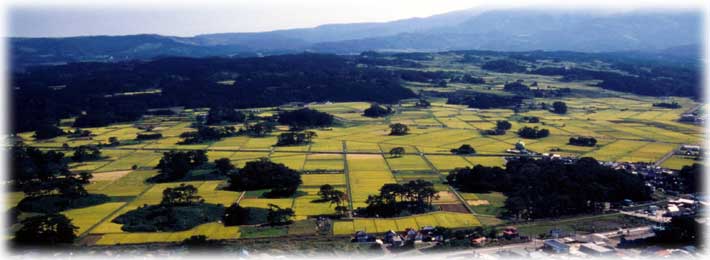

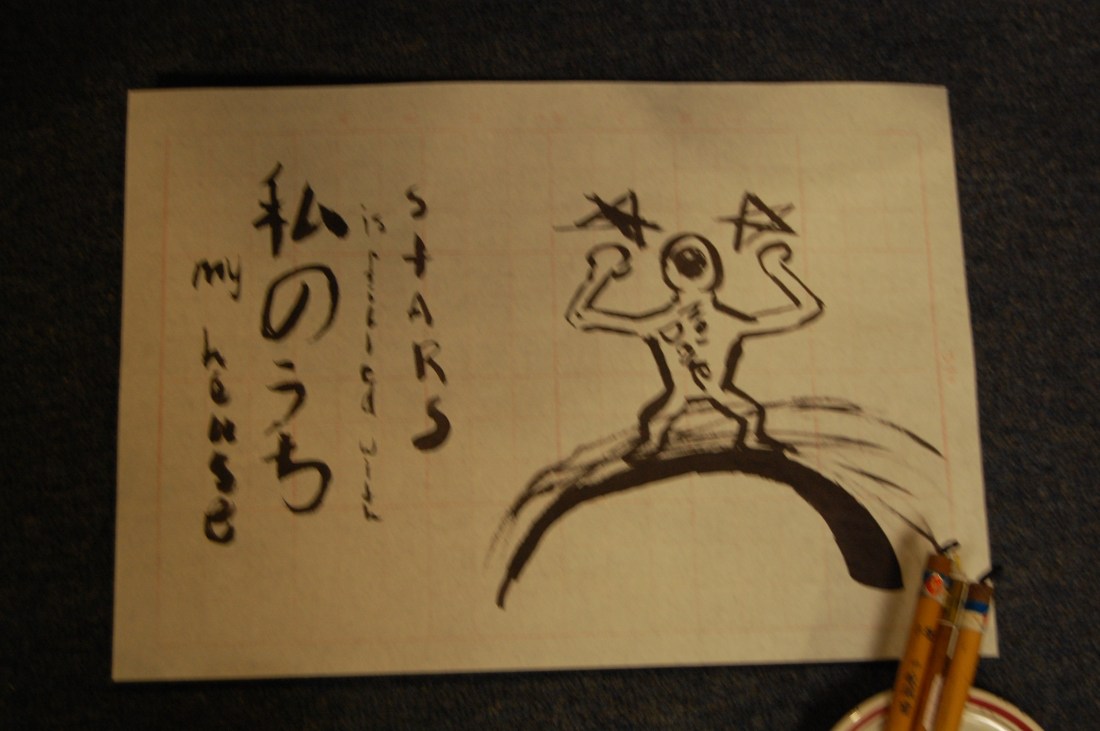

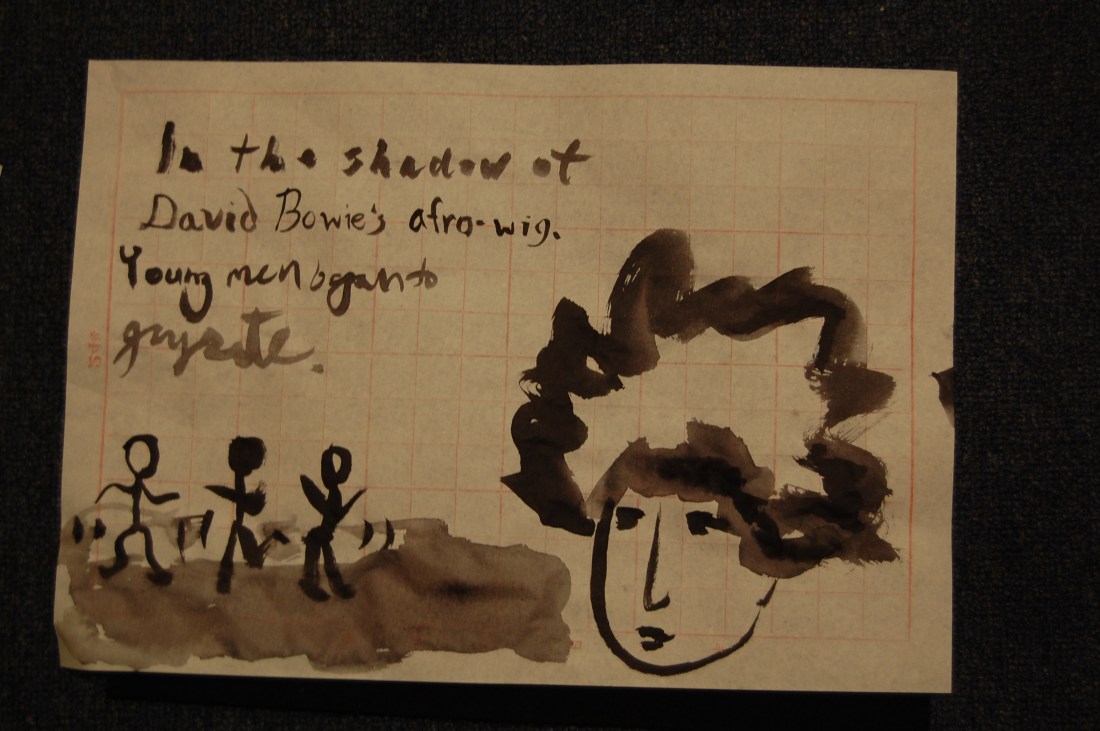
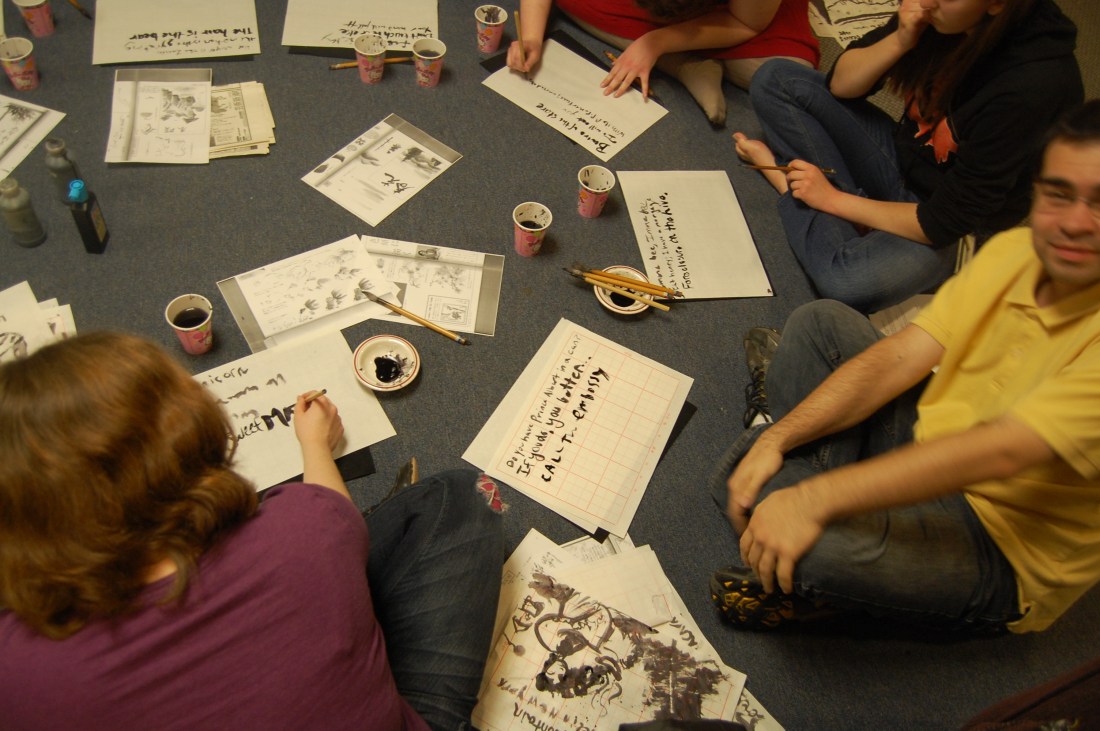

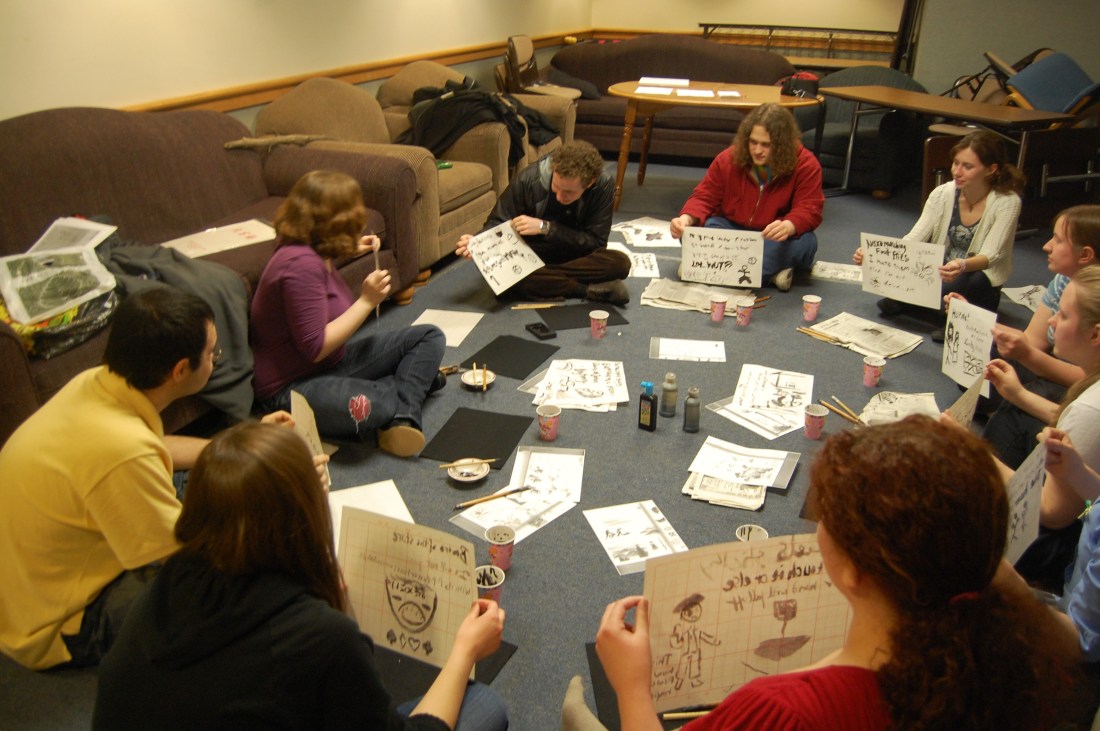

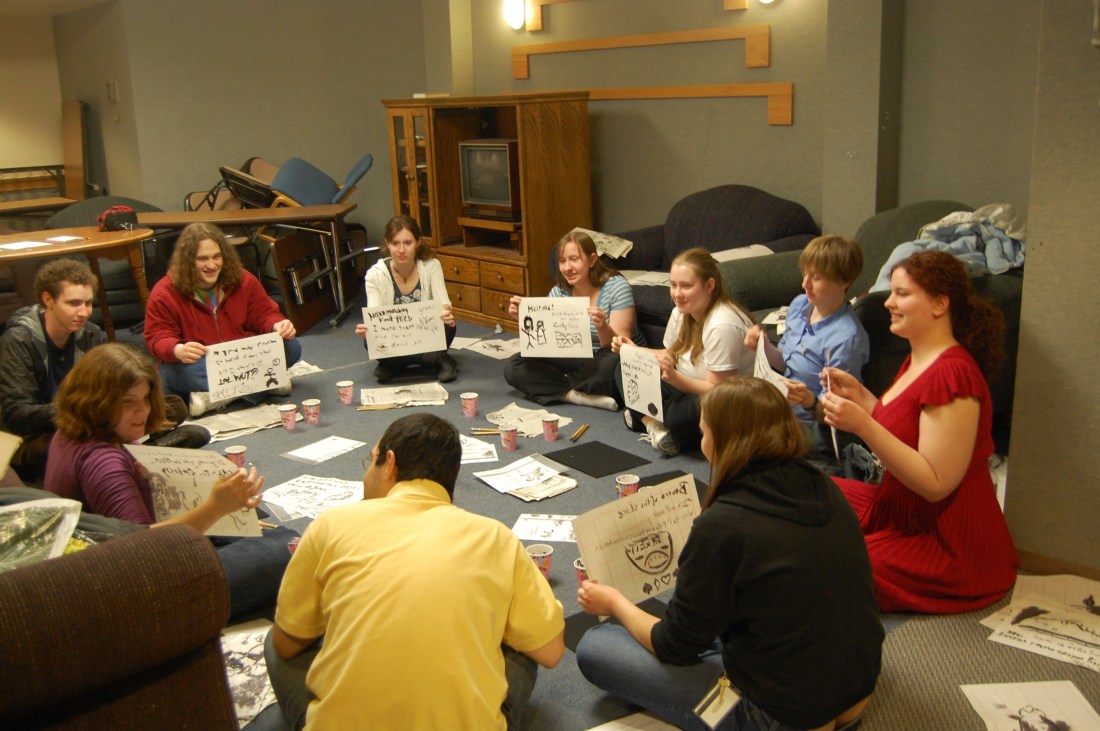
This is a wonderful post, filled with history, poetry and memory. Thank you so much for sharing it.